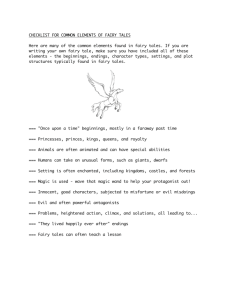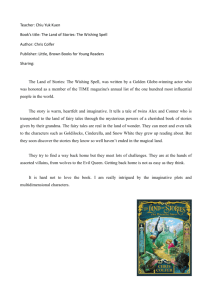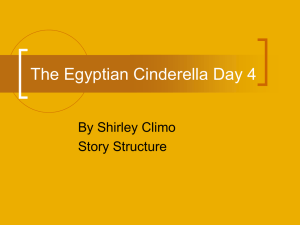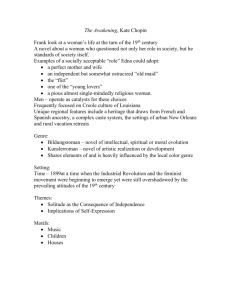3EditorialCon
advertisement
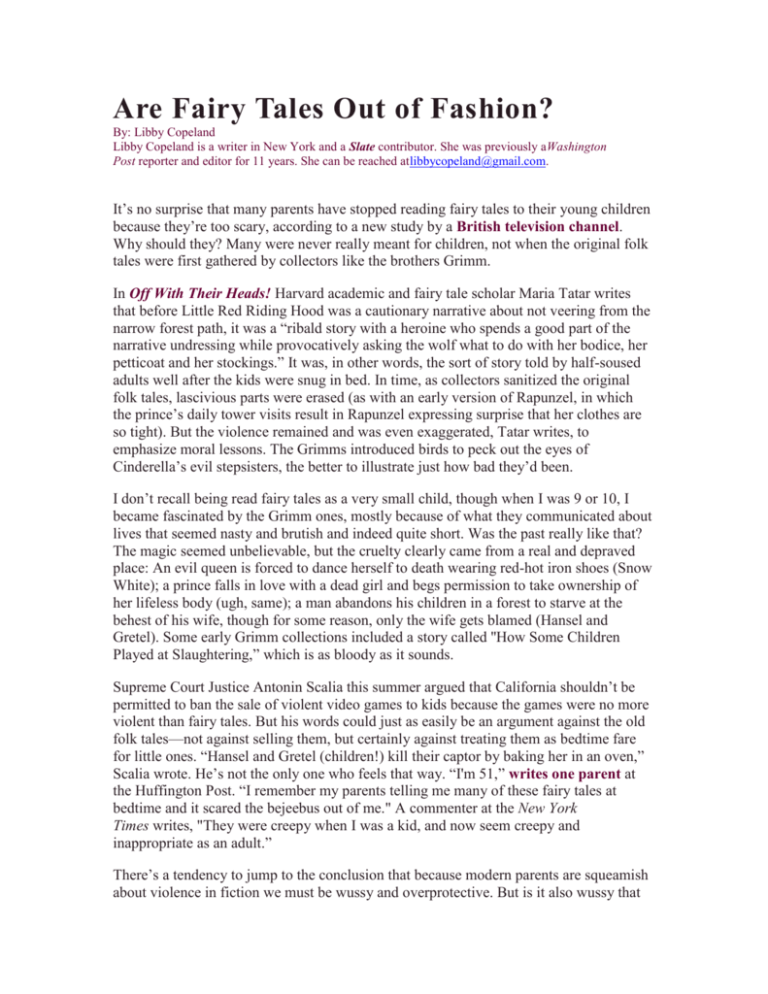
Are Fairy Tales Out of Fashion? By: Libby Copeland Libby Copeland is a writer in New York and a Slate contributor. She was previously aWashington Post reporter and editor for 11 years. She can be reached atlibbycopeland@gmail.com. It’s no surprise that many parents have stopped reading fairy tales to their young children because they’re too scary, according to a new study by a British television channel. Why should they? Many were never really meant for children, not when the original folk tales were first gathered by collectors like the brothers Grimm. In Off With Their Heads! Harvard academic and fairy tale scholar Maria Tatar writes that before Little Red Riding Hood was a cautionary narrative about not veering from the narrow forest path, it was a “ribald story with a heroine who spends a good part of the narrative undressing while provocatively asking the wolf what to do with her bodice, her petticoat and her stockings.” It was, in other words, the sort of story told by half-soused adults well after the kids were snug in bed. In time, as collectors sanitized the original folk tales, lascivious parts were erased (as with an early version of Rapunzel, in which the prince’s daily tower visits result in Rapunzel expressing surprise that her clothes are so tight). But the violence remained and was even exaggerated, Tatar writes, to emphasize moral lessons. The Grimms introduced birds to peck out the eyes of Cinderella’s evil stepsisters, the better to illustrate just how bad they’d been. I don’t recall being read fairy tales as a very small child, though when I was 9 or 10, I became fascinated by the Grimm ones, mostly because of what they communicated about lives that seemed nasty and brutish and indeed quite short. Was the past really like that? The magic seemed unbelievable, but the cruelty clearly came from a real and depraved place: An evil queen is forced to dance herself to death wearing red-hot iron shoes (Snow White); a prince falls in love with a dead girl and begs permission to take ownership of her lifeless body (ugh, same); a man abandons his children in a forest to starve at the behest of his wife, though for some reason, only the wife gets blamed (Hansel and Gretel). Some early Grimm collections included a story called ''How Some Children Played at Slaughtering,” which is as bloody as it sounds. Supreme Court Justice Antonin Scalia this summer argued that California shouldn’t be permitted to ban the sale of violent video games to kids because the games were no more violent than fairy tales. But his words could just as easily be an argument against the old folk tales—not against selling them, but certainly against treating them as bedtime fare for little ones. “Hansel and Gretel (children!) kill their captor by baking her in an oven,” Scalia wrote. He’s not the only one who feels that way. “I'm 51,” writes one parent at the Huffington Post. “I remember my parents telling me many of these fairy tales at bedtime and it scared the bejeebus out of me." A commenter at the New York Times writes, "They were creepy when I was a kid, and now seem creepy and inappropriate as an adult.” There’s a tendency to jump to the conclusion that because modern parents are squeamish about violence in fiction we must be wussy and overprotective. But is it also wussy that we don’t spank anymore, or tell our children that they’re wicked? We don’t look at violence in the same way as we used to; it is not a threat for bad behavior, nor is it God’s punishment for sin. I’m sometimes troubled by reading even the most modernized versions of fairy tales to my daughter, who is 2½. It’s not that Walt Disney didn’t do his best to excise the violence from these creaky folk tales; fairy tale scholar Jack David Zipes has called him “that twentieth-century sanitation man.” But the lessons these cleansed tales impart are not ones I wish to teach, even if they are canonical to Western culture. Little Red Riding Hood is to blame merely for being curious and veering off her path to pick flowers. Beauty leads to happily-ever-afters. We have a Cinderella book, a gift from a friend, and when I read it to my daughter, I try to soften the wickedness of the evil stepsisters and stepmother. I omit the worst things they say— “a simple washer girl like you is no fit for royal company!”—and I make it so Cinderella doesn’t cry. Still, there’s no way around the basic premise that passivity and tears are rewarded. (I’m convinced Cinderella syndrome is why not enough of us ask for raises; we’re waiting for our bosses to notice how great we are. And I’m not the only one who believes Disney princesses aren’t the best role models for little girls.) If altering fairy tales seems like politically correct white-washing, I would counter that it is the tradition of these folk tales to be changed by the era they’re in. We’re the fools if we treat them like gospel. As Zipes points out, Frenchman Charles Perrault altered the tale of Cinderella when he recorded it in the 1600s, making the protagonist submissive and industrious. In earlier oral versions, which “emanated from a matriarchal tradition,” Cinderella is more the mistress of her own fate. One Italian version has her killing her stepmother. I suppose I could confiscate our daughter’s Disney-fied Cinderella book, but that feels like a step too far. She’s a pretty major figure, and our daughter will come across her sooner or later. I would rather take charge of this story than let someone else tell it. And when our daughter is much older, able to grasp historical context and possessed of that child's fascination with darkness, I hope she’ll read the historical versions of the tale, including the one where Cinderella chops off her stepmother’s head, and another in which Cinderella’s stepsisters chop their feet to fit them in that glass slipper. They’re all delightfully sinister—just not for a toddler’s ears.


